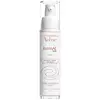What's inside
What's inside
 Key Ingredients
Key Ingredients

 Benefits
Benefits

 Concerns
Concerns

 Ingredients Side-by-side
Ingredients Side-by-side

Water
Skin ConditioningCaprylic/Capric Triglyceride
MaskingParaffinum Liquidum
EmollientGlyceryl Stearate
EmollientPEG-100 Stearate
Squalane
EmollientPropylene Glycol
HumectantMicrocrystalline Wax
Emulsion StabilisingPEG-40 Hydrogenated Castor Oil
EmulsifyingBHT
AntioxidantCaprylyl Glycol
EmollientCarbomer
Emulsion StabilisingDisodium EDTA
Oleoyl Dipeptide-15
Skin ConditioningOleoyl Tetrapeptide-31
AntioxidantCI 17200
Cosmetic ColorantRetinal
Skin ConditioningTocopheryl Glucoside
EmollientTriethanolamine
BufferingWater, Caprylic/Capric Triglyceride, Paraffinum Liquidum, Glyceryl Stearate, PEG-100 Stearate, Squalane, Propylene Glycol, Microcrystalline Wax, PEG-40 Hydrogenated Castor Oil, BHT, Caprylyl Glycol, Carbomer, Disodium EDTA, Oleoyl Dipeptide-15, Oleoyl Tetrapeptide-31, CI 17200, Retinal, Tocopheryl Glucoside, Triethanolamine
Water
Skin ConditioningGlycerin
HumectantAlcohol Denat.
AntimicrobialGlycine Soja Oil
EmollientIsononyl Isononanoate
EmollientPentylene Glycol
Skin ConditioningDicaprylyl Ether
EmollientPropylene Glycol
HumectantPEG-6 Caprylic/Capric Glycerides
EmulsifyingPPG-6-Decyltetradeceth-30
EmulsifyingDicaprylyl Carbonate
EmollientGlyceryl Isostearate
EmollientSodium Hyaluronate
HumectantRetinol
Skin ConditioningAmmonium Polyacryloyldimethyl Taurate
Emulsion StabilisingCaprylyl Glycol
EmollientCitric Acid
BufferingTrisodium Ethylenediamine Disuccinate
Xanthan Gum
EmulsifyingButylene Glycol
HumectantTocopherol
AntioxidantPentaerythrityl Tetra-Di-T-Butyl Hydroxyhydrocinnamate
AntioxidantCeramide AP
Skin ConditioningWater, Glycerin, Alcohol Denat., Glycine Soja Oil, Isononyl Isononanoate, Pentylene Glycol, Dicaprylyl Ether, Propylene Glycol, PEG-6 Caprylic/Capric Glycerides, PPG-6-Decyltetradeceth-30, Dicaprylyl Carbonate, Glyceryl Isostearate, Sodium Hyaluronate, Retinol, Ammonium Polyacryloyldimethyl Taurate, Caprylyl Glycol, Citric Acid, Trisodium Ethylenediamine Disuccinate, Xanthan Gum, Butylene Glycol, Tocopherol, Pentaerythrityl Tetra-Di-T-Butyl Hydroxyhydrocinnamate, Ceramide AP
 Reviews
Reviews

Ingredients Explained
These ingredients are found in both products.
Ingredients higher up in an ingredient list are typically present in a larger amount.
Caprylyl Glycol is a humectant and emollient, meaning it attracts and preserves moisture.
It is a common ingredient in many products, especially those designed to hydrate skin. The primary benefits are retaining moisture, skin softening, and promoting a healthy skin barrier.
Though Caprylyl Glycol is an alcohol derived from fatty acids, it is not the kind that can dry out skin.
This ingredient is also used as a preservative to extend the life of products. It has slight antimicrobial properties.
Learn more about Caprylyl GlycolPropylene Glycol is an odorless, colorless liquid. As a humectant, it helps skin retain moisture. It also aids in delivering active ingredients.
Another role of this ingredient is preventing a product from melting or freezing. Propylene glycol also adds antimicrobrial properties to a product, elongating product lifespan.
This ingredient is considered an organic alcohol and commonly added into both cosmetics and foods.
Those with sensitive skin or conditions may develop a rash when using this ingredient.
Learn more about Propylene GlycolWater. It's the most common cosmetic ingredient of all. You'll usually see it at the top of ingredient lists, meaning that it makes up the largest part of the product.
So why is it so popular? Water most often acts as a solvent - this means that it helps dissolve other ingredients into the formulation.
You'll also recognize water as that liquid we all need to stay alive. If you see this, drink a glass of water. Stay hydrated!
Learn more about Water